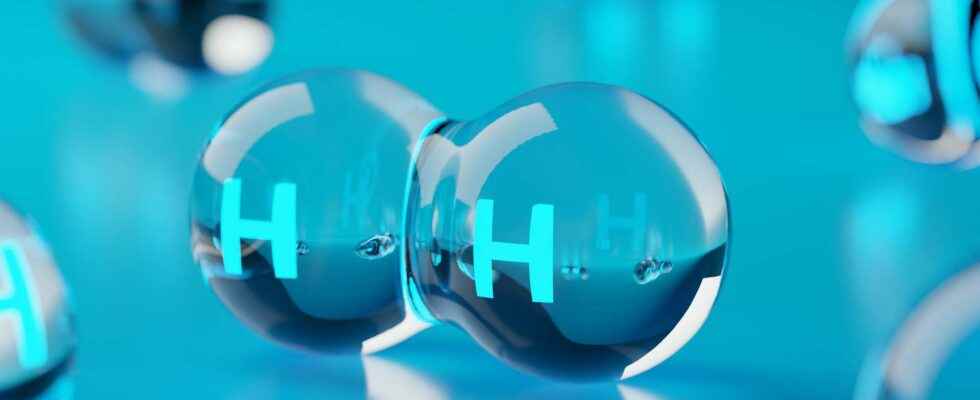You will also be interested
[EN VIDÉO] Blue, grey, yellow and green hydrogen: what’s the difference? Hydrogen is often equated with a color, which depends on how it is produced.
” Yes, my friends, I believe that water will one day be used as combustiblewhat’hydrogen and oxygen, which constitute it, used singly or simultaneously, will provide a source of heat and of light inexhaustible and of an intensity that coal cannot have. “These words of the visionary Jules Verne from the novel The mysterious island date back to 1874. More than a century later, hydrogen has become a strategic issue for achieving the necessary energy transition towards carbon neutrality by 2050, as promised in 2015 by all the signatory countries of the Paris climate agreement.
Challenges at all stages
However, the mission is not easy. Today, 95% of the hydrogen produced in the world* is produced using fossil fuels. However, it is possible to manufacture it without emitting carbon dioxide, thanks toelectrolysis carbon-free water and electricity. If a technological leap has been made in recent years, questions, even real locks techniques, remain about its production, but also about the three main phases that condition its use: compression, storage and distribution.
Solutions for industry and mobility
This is about being able to find innovative and appropriate solutions, and thus meet the drastically increased hydrogen needs, particularly in the metallurgy, industry chemicals and heavy mobility, i.e. trains, buses, trucks, boats, but also the air Transport and aerospace. In the medium term, hydrogen could also constitute a stabilizing element for energy networks and contribute to the flexibility of the electrical system by providing a mode of storage, particularly seasonal.
The role of France
France has a major role to play in these future prospects. She can take advantage of this market emergingespecially in matter jobs estimated at 100,000 by 2030, provided there are initiatives to structure and support the sector. Of course, France and Germany have promised to invest 7 and 9 billion euros in the sector by 2030 and the European Commission has drawn up an ambitious roadmap in July 2020. The political will is therefore very real, players in the sector still need to be able to achieve their ambitious objectives, in particular in terms of reducing costs across the entire value chain and setting up infrastructure, both in terms of generation, transmission and distribution capacity.
EDF, a major player in the sector
EDF is one of them. Although the group founded its own dedicated subsidiary, Hynamics, two years ago, its interest in the subject actually dates back several decades. At the start of the 1970s, when nuclear power occupied the lion’s share of research, EDF was already mobilizing all of its R&D expertise until the emergence of a real demonstrator which reaches the power of 20 megawatts, which still remains a world record today. Since then, the group has multiplied partnerships, in particular with McPhy, Vicat, Transdev and France Hydrogène, to give reality to its ambitions. This live ” Twitter Spaces will bring them together for a discussion that will allow them to better understand the challenges of hydrogen and the means to achieve them.
With the participation of :
- Carmen Munoz-Dormoy, EDF R&D Downstream Activities Director;
- Louise Vilain, EDF Pulse Ventures Director, incubation and major innovative industrial projects;
- Myriam Maestroni, President of the “e5t” foundation and administrator of McPhy;
- Marie Godard Pithon, Performance and Investment Director at Vicat;
- Brigitte Guichard, Burgundy-Franche-Comté Regional Director at Transdev;
See you Wednesday, April 13 at 6:30 p.m.!
* Source ADEME 2021
Article produced in partnership with EDF
Interested in what you just read?
